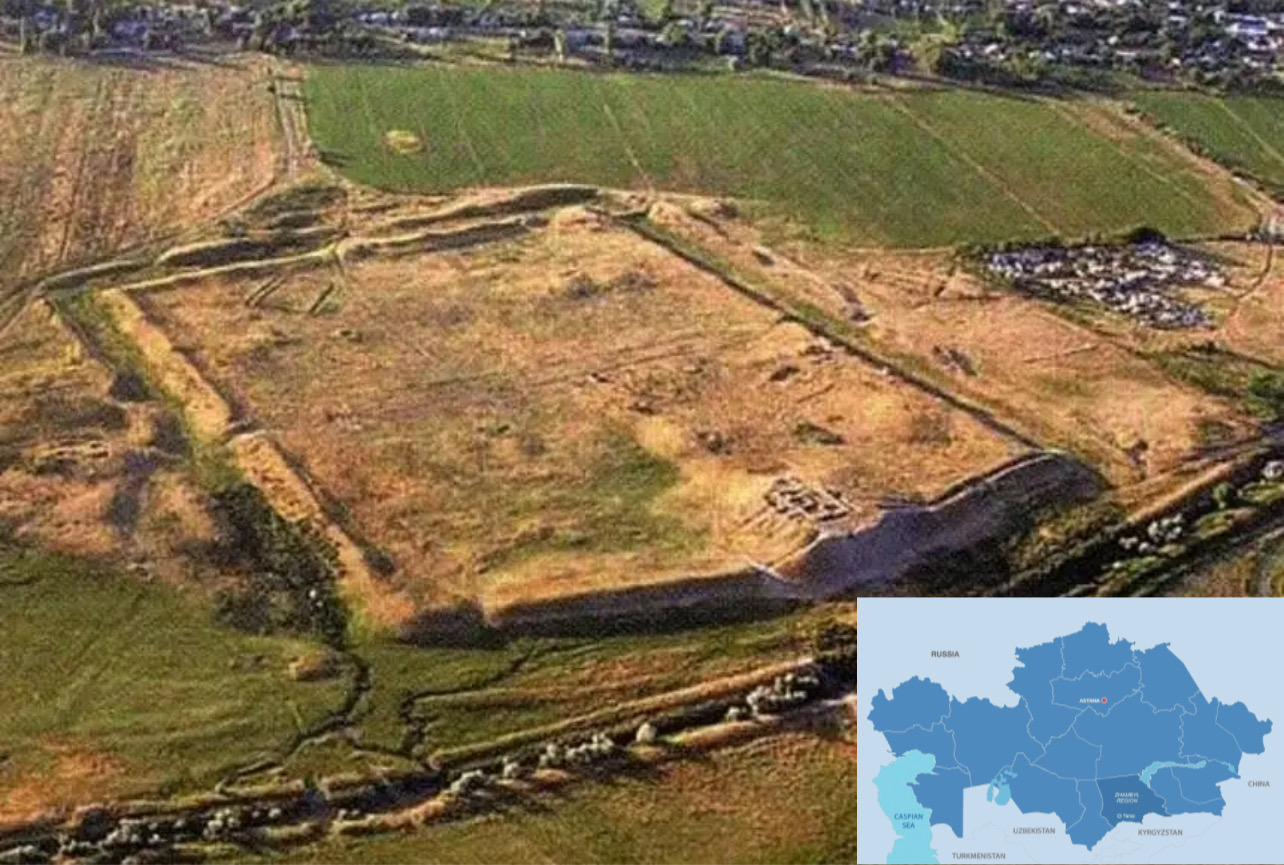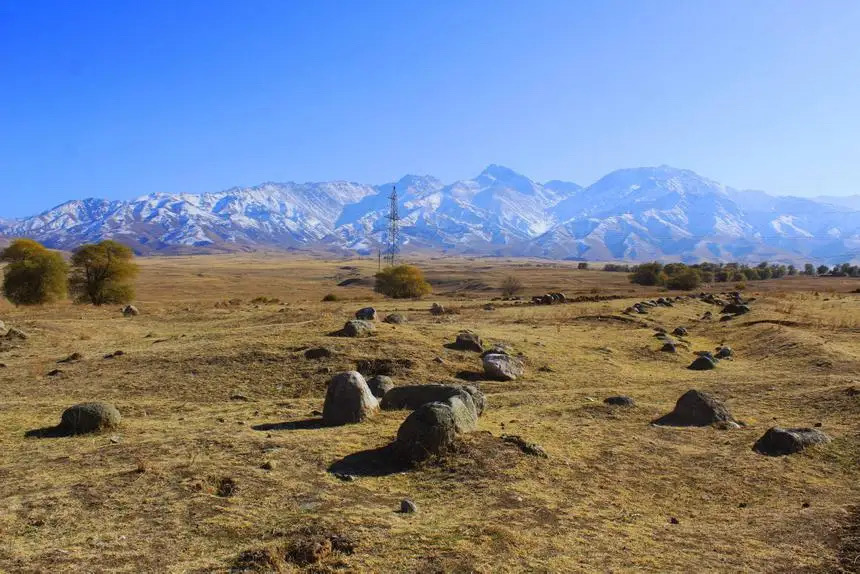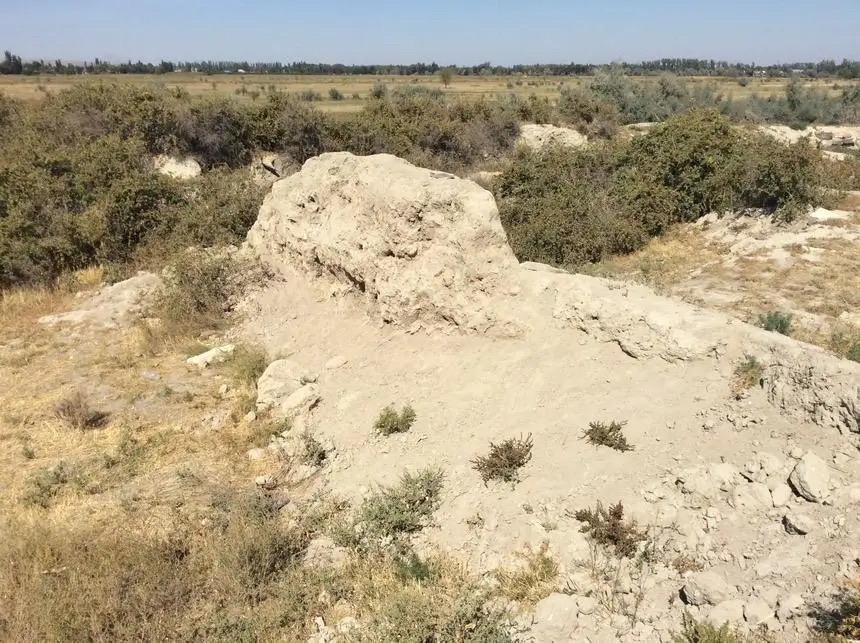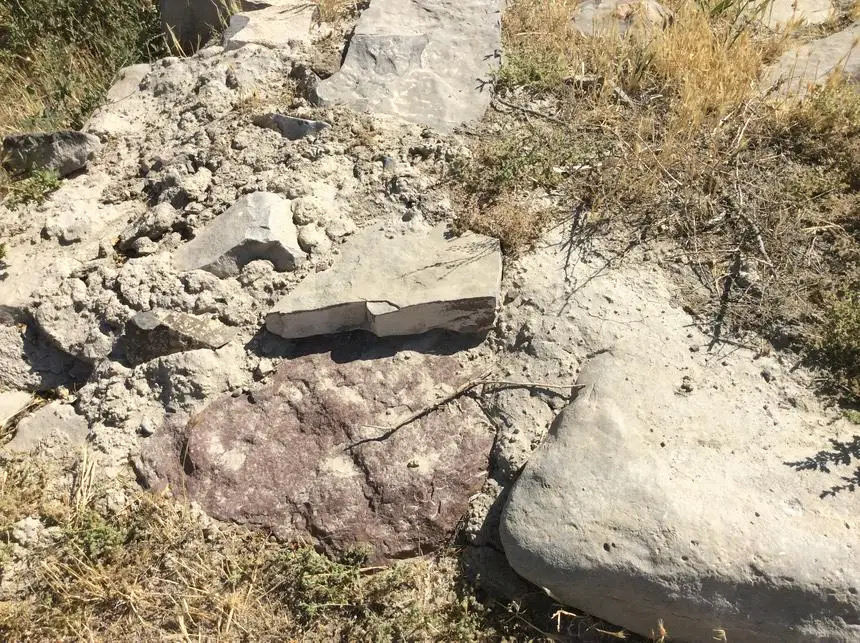ASTANA — In the heart of the Zhambyl Region, an extraordinary tapestry of history unfolds, adorned with 116 ancient city ruins that grace the southern expanse of this diverse area. Among them, more than 30 ancient satellite cities orbit the vicinity of Taraz, once a vital link on the Great Silk Road. Among these remarkable ancient cities, Kostobe stands out, where life thrived and dynamic trade networks flourished over 15 centuries ago, reports Kazinform.

The ancient city of Kostobe. Photo credit: Archive of the historical and local history museum of the Zhambyl Region. Click to see the map in full size. The map is designed by The Astana Times.
The ancient city of Kostobe is situated on the right bank of the Talas River, near the modern administrative center of the Baizak District, just 15 kilometers from today’s Taraz city. Historians trace its origins back to the sixth century, making it one of the largest ancient settlements in the Talas River oasis.
“An illustrious Arab geographer, Muhammad ibn Ahmad al-Maqdisi from Jerusalem, documented a city known as Jamukhat or Khamukat in the 10th century. He described it as a great city complete with walls, a cathedral mosque and bustling markets. Historical chronicles suggest that the city of Jamukhat, the ancient name for Kostobe, was founded in the sixth century by migrants from Bukhara,” said Galiya Alimzhanova, historian and archaeologist from the Zhambyl Region.
Intriguingly, it was Bukharan merchants who spearheaded the city’s establishment, naming it after their leader, Jamukha. During a period of oppressive rule in Bukhara under Apa Khagan, the Sogdian elite chose to break away from their ruler’s grasp, appealing to the supreme Turkic Khagan for land to build their city. The Khagan acceded to their request, granting them land near Taraz in the Talas River valley. This move allowed them to liberate themselves from Bukhara’s authoritarian rule, shedding light on the intricate political dynamics of the era.

Archaeological investigations have revealed that Kostobe’s central precinct features a quadrangular area encompassed by double walls, fortified with towers, measuring 420 by 450 meters. Photo credit: Archive of the historical and local history museum of the Zhambyl Region.
Throughout different years, many researchers have studied this ancient city. Russian historian, Islamicist and orientalist Vasily Bartold conducted a thorough investigation of Kostobe, proving that this settlement is located in the Talas Valley and not on the Syr Darya River, as many researchers had previously believed. In 1938, during excavations in the Kostobe settlement, Soviet archaeologist and orientalist Alexander Bernstam found coins and ceramic products dating from the sixth to the 12th centuries.
Archaeological investigations have revealed that Kostobe’s central precinct features a quadrangular area encompassed by double walls, fortified with towers, measuring 420 by 450 meters. The presence of double walls and a double moat signifies the city’s vital role as a strategic stronghold along trade routes, safeguarding against attacks and plundering, which were common during the Medieval period.
The vestiges of fortress walls, a citadel, residential and utility structures have been preserved. This city fortress boasted bypass corridors and spacious chambers, constructed with raw brick and pakhsa blocks, a specific type of clay bricks commonly used in the construction of structures in Central Asia.
Furthermore, two cemeteries have been unearthed, with the majority of remains discovered within structures known as nauses, rectangular or square burial chambers utilized in the Middle Ages in southern Kazakhstan. During these burials, various items were placed alongside the deceased. In Jamukhat’s burial chambers, fragments of vessels, cups, jugs, and even horse skulls and bones have been found.

Photo credit: Archive of the historical and local history museum of the Zhambyl Region.
“Among the unique discoveries is the sanctuary, whose walls were once adorned with intricately carved terracotta. A domed knoll with a diameter of 80 meters and a height of 15 meters was found in Kostobe. Scientists suggest it is a temple of fire,” said Alimzhanova.
In the Middle Ages, Kazakhstan was home to many religious movements and world religions. In Kostobe, archaeologists uncovered two spacious rooms with half-meter half-columns and spherical hinges. However, only fragments of decorative elements of the room have remained. It is clear that even from the fragments, the terracotta carving was highly artistic and performed on a thick layer of plaster up to seven centimeters wide. Judging by the richness of the interior and the presence of the Zoroastrians’ hearth, it was indeed a sanctuary associated with the worship of fire.
Archaeological excavations confirmed that extensive trade took place in Kostobe. Many fascinating artifacts were discovered, including coins, fragments of silver jewelry, bronze earrings of various shapes, and a wide variety of ceramics. The discovery of a bronze handle, mirrors shaped like female figures, a silver cross, and a Buddha figure serves as proof of the diverse religious influences in ancient southern Kazakhstan. Among the surprising finds is a silver earwig cleaner, which has a handle in the form of a bodhisattva figure.

Photo credit: Archive of the historical and local history museum of the Zhambyl Region.
In July 2014, eight archaeological monuments of Kazakhstan, including Kostobe, entered the United Nations Educational Scientific and Cultural Organization’s (UNESCO) World Heritage List as part of the Silk Roads: the Routes Network of Chang’an-Tianshan Corridor. In 2019, the Kostobe settlement was included in the list of Kazakhstan’s historical and cultural monuments of national significance.
The exploration of Kostobe not only illuminates the city’s history but also unveils the rich tapestry of cultural exchange and trade that characterized the Silk Road in ancient times. It stands as a testament to the enduring legacy of this historic trade route and the resilience of the civilizations that thrived along its path.


